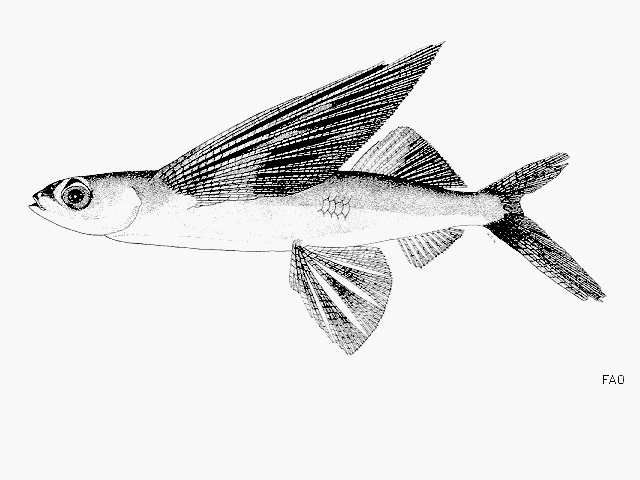| Exocoetidae (Flyingfishes) |
| 28 cm SL (male/unsexed) |
|
pelagic-oceanic; marine; depth range - 0 m, oceanodromous |
| Indo-West Pacific: in tropical waters, south to the Mascarenes, Aldabra, and Natal, South Africa (Ref. 33390) and east to Japan, the Caroline and Solomon islands. Western Atlantic: 40°N to off Rio de Janeiro in Brazil. Eastern Atlantic: Gulf of Guinea and adjacent waters. |
|
Dorsal spines (total): 0-0; Dorsal soft rays (total): 13-15; Anal spines: 0-0; Anal soft rays: 8-11. Body dark iridescent blue above, silvery white below; pectorals black with pale margin, central portion crossed by a yellowish stripe becoming narrower toward anterior fin margin; pelvic fins with prominent black spot (Ref. 6797). Body of juveniles with dark bars (Ref. 6797). |
| Inhabits surface waters of the open ocean, capable of leaping out of the water and gliding for long distances above the surface (Ref. 3395). Planktivore (Ref. 97629). |
|
Least Concern (LC); Date assessed: 10 July 2012 Ref. (130435)
|
| harmless |
Source and more info: www.fishbase.org. For personal, classroom, and other internal use only. Not for publication.

